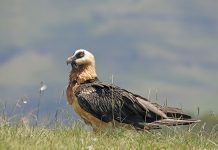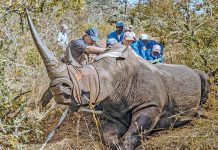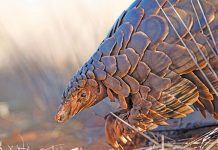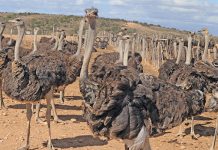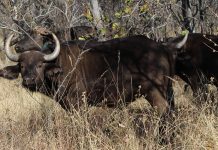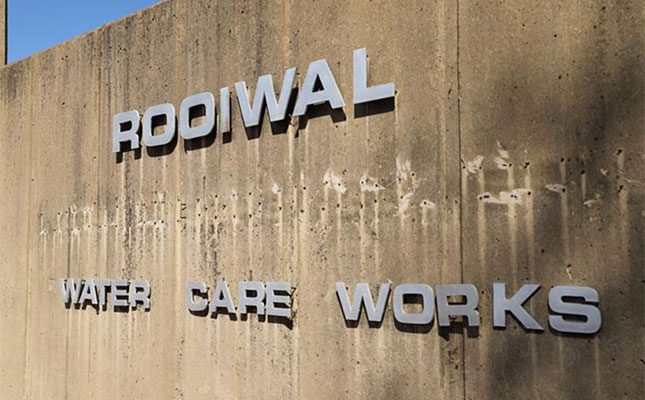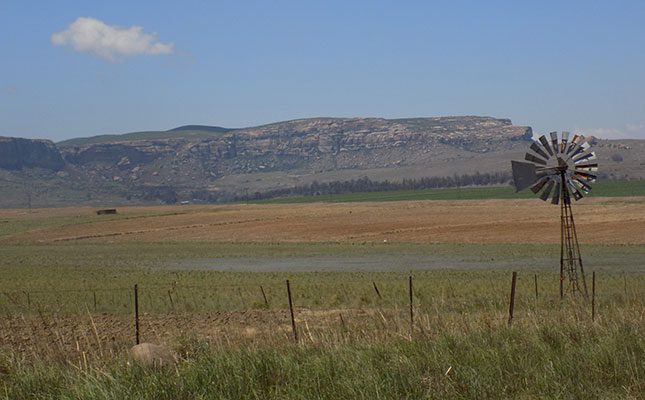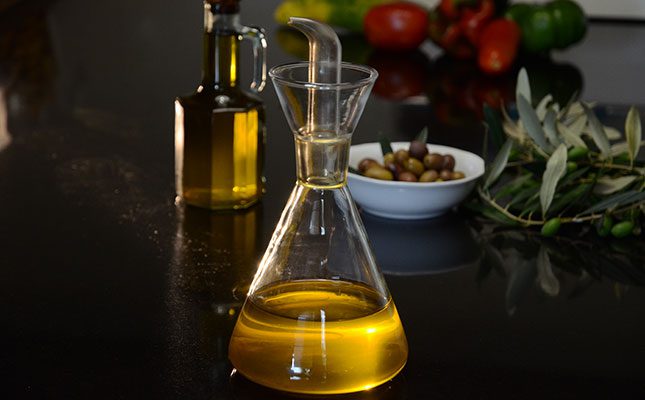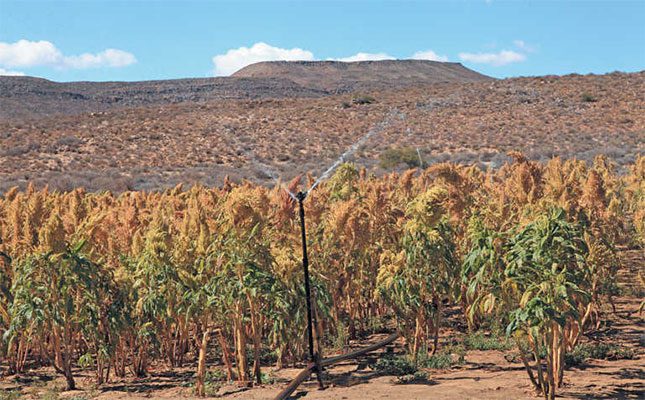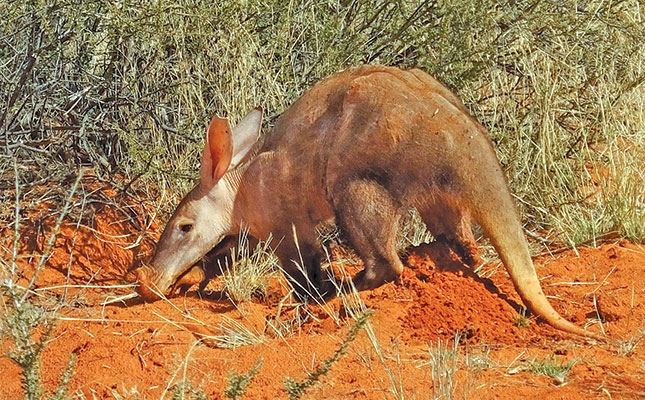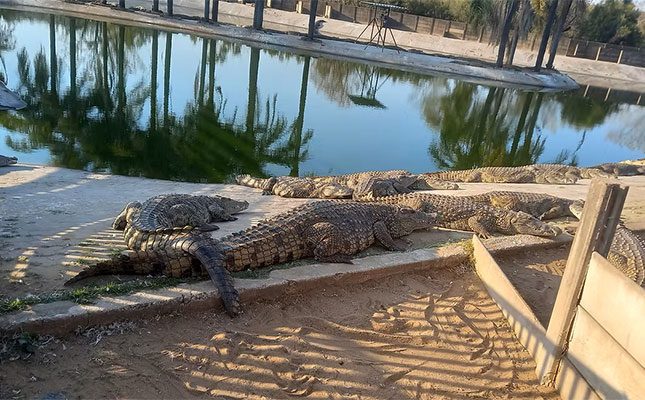
Photo: Izintaba.com
Crocodile farming is a specialised industry that blends luxury and sustainability. But like producers in other agricultural industries around the world, South African crocodile farmers must grapple with climatic factors that significantly influence their operations and profitability.
Stefan van As, founder and managing director of Le Croc, a crocodile farm and tannery near Brits, North West, explains that crocodiles are ectothermic, which means they rely on external environmental conditions to regulate their body temperatures.
In the wild, they thrive in tropical and subtropical regions with stable climates, suitable temperatures and year-round access to water. However, South Africa’s climate, characterised by seasonal extremes, poses challenges for the industry.
“Maintaining an optimal and stable body temperature of 32°C for a crocodile requires specialised housing and stable environmental conditions,” says Van As.
“A prolonged drop in [body] temperature below 22°C can cause a crocodile to stop eating, leading to growth loss. Conversely, a body temperature that exceeds 35°C can result in heat stress and even mortality.”
To counteract these temperature fluctuations, Van As says many farms invest heavily in infrastructure, including solar-powered heating systems and water-management technologies. Such measures ensure crocodiles can thermoregulate effectively, but they come at significant operational costs, particularly during prolonged cold spells or heatwaves.
He adds that the need for controlled environments has turned crocodile farming into a capital-intensive venture. Housing must provide basking areas for warmth, shaded zones for cooling, and bodies of water to facilitate natural behaviours.
Advanced monitoring systems are also crucial to detect and manage extreme temperatures.
“Crocodile facilities must allow for adjustments during extreme weather conditions. This requires substantial investments, making it difficult for smaller operations to compete, especially in marginal climates,” he says.
Impact of climate change
Climate change exacerbates these challenges, introducing erratic weather patterns and increasing operational demands.
“Extreme weather conditions like temperature spikes require farmers to use more energy and water to maintain optimal conditions for their crocodiles,” says Van As.
This has spurred some producers to adopt renewable energy solutions, but these investments add to their already high costs.
The long-term implications of climate change also extend to natural habitats. Droughts and floods threaten river ecosystems, reducing suitable nesting sites and food availability for wild populations.
“Human encroachment, pollution and climate-induced habitat loss further strain wild crocodile populations,” he explains.
Despite the challenges, crocodile farming has emerged as a model for sustainability. Regulated by the Convention on International Trade in Endangered Species of Wild Fauna and Flora (CITES), the industry balances commercial interests with conservation efforts.
Captive-breeding programmes have not only reduced pressure on wild populations but have also contributed to their recovery.
“Captive breeding operations achieve a 98% survival rate for hatchlings, compared to just 2% to 3% in the wild. In some countries, introducing captive-bred crocodiles [to the wild] has helped stabilise and even increase wild populations,” explains Van As.
This success shows the importance of regulated trade, and the high quality of skins from captive-bred crocodiles has diminished the value of wild skins, reducing incentives for illegal hunting. Moreover, the industry supports local communities by creating jobs and fostering coexistence with crocodiles.
The crocodile farming industry is closely tied to the luxury leather market, where skin quality determines profitability. According to Van As, top-grade skins, often destined for use by high-end European brands, can command up to 80% of a crocodile’s total carcass value.
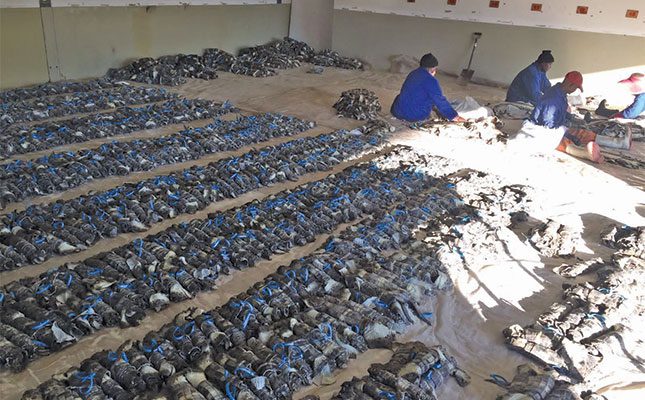
In contrast, lower-grade skins face volatile prices due to oversupply and tightening grading standards.
“The demand for top-grade skins remains stable, driven by long-term supply agreements with international brands. However, the low-end market has become increasingly unprofitable, ” he says.
Collin Chauke, co-owner of and farmer at Izintaba Crocodile Farm in Pretoria, Gauteng, echoes these sentiments, saying the high-end market is a specialised industry requiring close collaboration with customers.
“Farms must adapt to market changes and produce the sizes and grades demanded by luxury retailers,” he says.
Other challenges
Chauke explains that in the 1980s, CITES granted South Africa Appendix II status for the captive breeding of Nile crocodiles (Crocodylus niloticus).
According to the CITES website, this status means that while this species is not currently threatened with extinction, trade must be controlled to avoid their overexploitation. It also allows farms to legally trade products like crocodile skins, meat and live animals if the operations meet strict regulations.
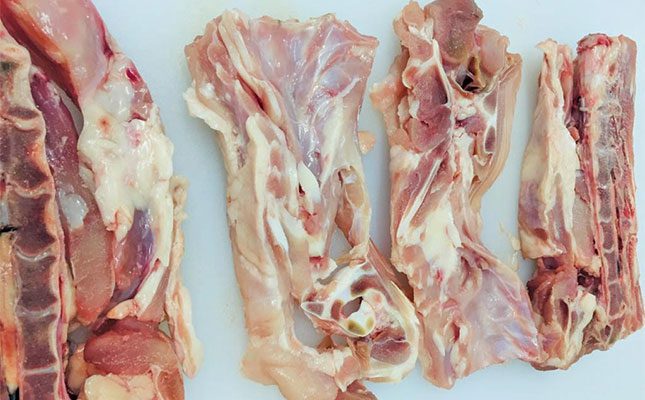
The industry saw rapid growth between 2012 and 2016, fuelled by the increased availability of hatchlings and high demand for skins. However, the market downturn since 2016, compounded by the COVID-19 pandemic, has forced many farms to close.
“Many African operations struggle to compete with low-cost Asian producers benefitting from favourable trade agreements with China. Yet, established South African farms have weathered these challenges by focusing on quality and sustainability,” adds Van As.
Chauke’s journey at Izintaba illustrates the obstacles the industry faces, as well as its potential.
While his initial plan was to farm broilers, Chauke pivoted to crocodiles after acquiring the farm through a land reform programme.
“Our climate is highly favourable for Nile crocodiles, but cold winters require boilers to maintain optimal conditions. We’ve faced hurdles, from inadequate infrastructure to high operational costs, but we remain committed to achieving global recognition,” says Chauke.
Looking ahead, he says that, aside from climate-change adaptation, the industry must navigate several hurdles, including market volatility and regulatory compliance. He adds that collaboration with international brands and adherence to standards set by bodies like the International Crocodilian Farmers’ Association will be crucial for long-term success.
“Entry into the top-end market requires meeting stringent standards, but this ensures sustainability and animal welfare,” adds Van As. “The luxury market increasingly recognises the role of regulated trade in conservation.”
Domestically, the post-pandemic recovery of tourism offers hope, and local operations specialising in the downstream processing and sale of exotic leathers are beginning to rebound.
Broader benefits
According to Chauke, beyond its contributions to the economy, crocodile farming highlights the interconnectedness of climate, wildlife and livelihoods, offering lessons for other industries grappling with similar issues.
“Our dedication to the success and the broader transformation of the crocodile farming industry keeps us moving forward. With the right support, we can contribute not only to the economy but also to the conservation of these remarkable creatures,” he concludes.
Email Stefan van As at [email protected] and Collin Chauke at [email protected].

